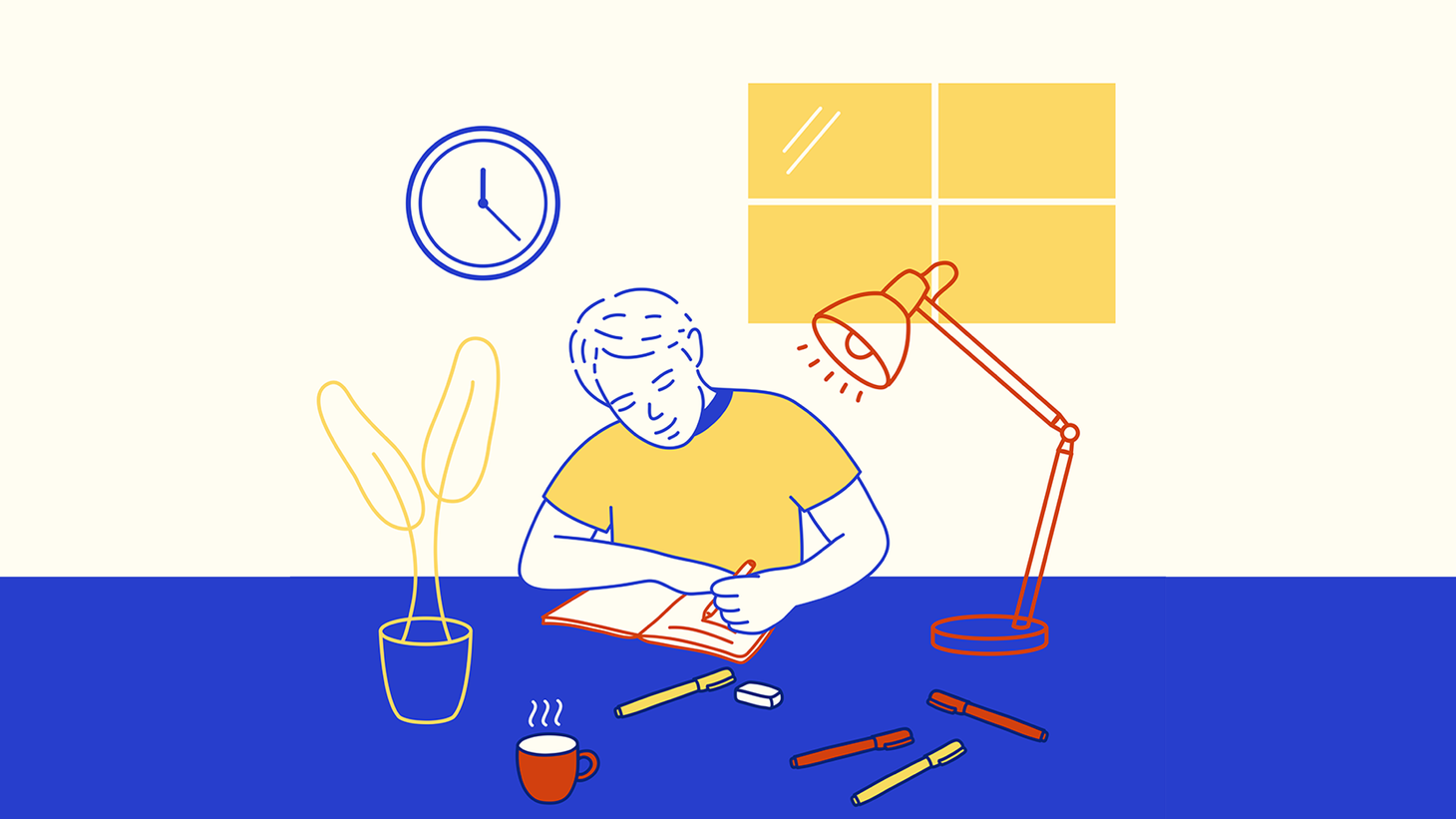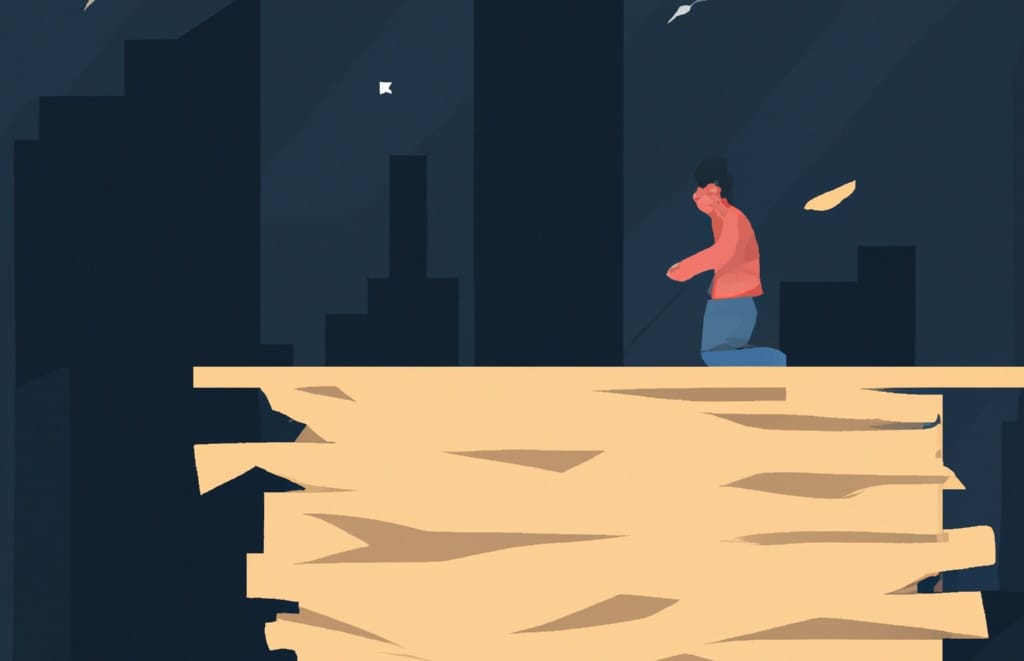My journey through founder burnout
My path through burnout included getting out of the CEO role by exiting the business. This transition came almost three years after my realization I wanted to get out of the role. However, it is not necessary for every founder experiencing burnout to get out of the role to find relief.

Looking for some support? If now is the time to consider coaching (or a CEO peer circle) reach out here.
Something has gone wrong
Driving down the highway outside of Joshua Tree, California, I could not believe what I saw on my phone.
Matt, so sorry to bother you. But we need to catch up. Give me a call as soon as you can. - Micah
Micah was the head of revenue for our company. He was running the team in my absence. I was four weeks into what was supposed to be a 12-week sabbatical.
My phone had been off while I attended a 7-day silent meditation retreat. The retreat was part of a concerted effort on my behalf to reset from the prior four years, years that had included:
- Losing a child
- Navigating a divorce
- Learning to be a single parent while running a startup
- Leading my company through near bankruptcy to profitability
- The departure of two co-founders
- My father's death
The 12 weeks away from the business felt critical to my longevity as a CEO.
Micah's message meant that attempted time away was likely coming to a grinding halt.
I had left the team specific instructions about circumstances in which to contact me. His text meant something had gone quite wrong.
Waking up to my own founder burnout
That retreat was one of the building blocks in my own clarity that I needed to find a way out of running the company I had helped found.
I have written separately about arriving at that clarity, and the steps I took to find my way out of the role. I have also written above practical steps for navigating burnout. I thought it would be helpful now that I have coached dozens of founders through their own burnout to revisit some of the themes I see looking back on my own journey and in conversations with other founders.
If you find yourself facing questions about your longevity in the role, I hope these reflections are helpful to you.
My path through burnout included getting out of the CEO role by exiting the business. This transition came almost three years after my realization I wanted to get out of the role. However, it is not necessary for every founder experiencing burnout to get out of the role to find relief.
As a coach, I have witnessed many founders redesign their roles, and their lives, to support a new way of being in the work. That may be the right path for you.
Before you can know where the journey will head, you first need to begin. There is no better place to begin than by taking space to get honest about what is really going on.
What is founder burnout?
A definition
Founder burnout is real. It’s not just about exhaustion — it’s the creeping erosion of joy, energy, and motivation. In this post, I share my own journey with burnout as a founder, how it showed up in my life, and what actually helped. You’ll also find clear signs, causes, and tools that might help you if you’re in the thick of it now.
Common signs and symptoms of founder burnout:
Following is a list of commons signs and symptoms of burnout.
- Feeling emotionally numb or apathetic
- Loss of motivation or energy, even after rest
- Increased irritability or withdrawal from your team
- Dreading work you used to love
- Constant self-criticism and imposter syndrome
Getting honest about what is going on
I knew I was dealing with burnout as a founder when:
- I found myself waking up at 3 AM full of dread
- I felt anxiety throughout my body as I stepped out of my car to walk into the office
- The energy and excitement I had felt in the earliest days of the business were absent
- I found myself fantasizing on a daily basis about getting out of the business
Sound familiar?
For as long as I could remember, raw effort had served me well. Beginning in high school, I had always been able to white-knuckle my way through any challenge.
Suddenly it felt like that gear was absent.
I felt exhausted. More than that, I felt empty.
Weekends didn't help. Vacations didn't help.
I needed a bigger change.
As a coach, what I often witness in clients experiencing burnout is an acute awareness on behalf of the client that there is something going on in their mind and body that cannot be ignored any longer.
If that is the case for you, the first step is to get honest about what is coming up.
Write it down. Share it with a trusted friend, partner, therapist, or coach. Write about it in your own journal.
Let the awareness in, and let the longing come to the forefront.
In order to create some space for that, you might need to begin by slowing down.
Slowing down
As I look back on my own experience of burnout (which I am in some ways still navigating my way out of...which is normal), I see several years back to back where I was sprinting to get through all that was present.
There was no time to fully process my divorce because my company was running out of money.
There was no time to fully process the departure of my co-founder because I had to recruit his replacement.
There was no time to process the death of my father because I had to fly to Germany to deal with a potential acquisition.
And on and on the ride went. Until I could not take it anymore.
One of the things I am most glad I did was get some space away from the day-to-day.
I began attending CEO boot camps in the mountains of Colorado that provided peer support from other founders. I also started to experiment with retreats like the one mentioned above.
Whatever feels workable for you, get yourself some space out of the day-to-day.
Seek some support along the way. Let a trusted friend or two in on the challenges you are carrying. If you need some ideas on that piece, start here. (Also, I am here personally if helpful!)
As you take space, explore the thoughts, feelings, and longings that are present.
It may be helpful to let your attention return to what brought you into entrepreneurship, or this role, in the beginning.
What were you hoping for?
How is your experience lining up with those hopes?
Let the longing in
In the early days of my own navigation of burnout, I felt afraid of the longing I could sense bubbling beneath the surface. I feared, if I let the thoughts and emotions in, the whole house of cards might come crashing down.
Having walked alongside many other founders since that time, I have come to believe there is ultimately no choice but to let the longing in and let it do its work. May as well proactively head there.
Whether with a journal, a friend, or a coach, let yourself explore:
- What are you longing for?
- What are you needing that you are not receiving?
For us type-A achievers, there is a part of us that frequently ends up in the driver's seat in our work. The 'do-er' or the 'achiever.'
Often, there is another part of us that gets sidelined: what we might consider our 'younger' self, 'emotional' self, or 'playful' self.
If that feels true for you, you might experiment with letting that part take the microphone for a while. Let that part pick up the pen and journal.
- What is she needing?
- What is she seeing that other parts of you are not?
- How is she feeling?
- What is she longing for?
As I began to honesty explore my own burnout, I came to see what made the experience so painful was how disconnected I felt: disconnected from any sense of purpose, disconnected from meaningful work, disconnected from play, and disconnected from other people. I felt alone and like it was all on my shoulders.
If that feels true for you, keep reading.
Seeking connection
As you take some space to think about your life and work, where are you feeling in connection with other people in a way that feels energizing, life-giving, and enjoyable?
- Where are you feeling lonely, isolated, or like it is all on your shoulders?
- With whom are you longing to feel more connected?
What messages come up for you? Where are you telling yourself that you are doomed to navigate the journey alone?
How would you like to experience your life and work going forward?
What is feeling in the way?
Alignment
Another one of the greatest contributors to founder burnout is the absence of alignment.
In my case, in the beginning, I was seeking two primary things in starting my own company:
- I wanted to work on a mission I cared about
- I wanted to work with people I cared about
The mission got away from us quickly. We started the company with the mission of making higher education more accessible.
We built a couple of early products and raised some capital, but 10 months in we realized we were running out of ideas and needed to pivot hard.
At the time, we were a few weeks into a 12-week accelerator. Short on time, we began testing more radical ideas. The one that hit, signing 5,000 users in 48 hours, and growing to $1M in revenue in 12 weeks, was Instacanvas. (Later, that product would evolve to Twenty20.)
The mission had changed from education-focused to helping creatives monetize their work. Still a wonderful mission, but one far less personal and meaningful to me.
The mission was not the only thing I would lose as the years progressed.
I started the company with two of my best friends. A key part of the dream was to live near the beach and work with my close friends.
Fast forward four years, and I was the only one of the original three co-founders left. (You can read about that whole part of the journey here.)
I woke up to find myself years from an exit and totally out of alignment with the original reasons I had started the company.
I found myself with a mission that no longer felt like mine and a team that I loved but that no longer included the brothers with whom I had set out on the journey.
I was Frodo without Sam and Gandolf. And with a quest that no longer felt mine to make.
What about you? Where do you find yourself in your own journey?
Awareness is the first step. You might take a few moments with a journal to explore some of the following questions for yourself:
- What are you learning about the work that is yours to do?
- Where are you in alignment, where are you out of alignment?
- How is the alignment with your closest partners and team members?
- What would bring you into greater alignment?
Letting your life breathe
In addition to loss of connection and alignment, the last major piece I can see that led to my burnout was living and working in a way that did not allow my life to breathe.
I mentioned above the way that white-knuckled effort served me early in my life. In school, and in early jobs, succeeded in part by outworking those around me. I see this pattern in many founders I coach as well.
But we did not evolve to live and work that way. We are not made for 50 stressors a day, for years of effort with no rest, for sitting at a desk with a screen most of our hours.
We also did not evolve as a solitary species. We evolved living in close community, hunting and problem-solving together.
Most of the founders I meet who are dealing with founder burnout are living and working in an unsustainable fashion just as I was.
The CEO role, as well as other executive roles, is a role where vision and inspiration are key ingredients. It is about thinking and dreaming long-term, about imagining a world as it could be. But it is so easy for the realities of the day-to-day to consume our attention and energy.
As you think about your own experience of your role:
- Where are you learning and growing outside of work?
- Where are you finding energy, joy, and support?
- What needs to change?
You are not alone
Wherever you find yourself in your own journey, you are not alone.
It is easy as a founder navigating burnout to feel alone, like it is all on our shoulders, or like there is no way out. But you are not alone. And you are not an indentured servant to your company.
Looking for some support? If now is the time to consider coaching (or a CEO peer circle) reach out here.
You do not need to navigate the questions you are holding by yourself.
If I can be of assistance to you in navigating your own journey, please reach out. I would love to meet you.
In the meantime, sending a big hug your way from my desk in LA.
-Matt
P.S. Want more? Here are 10 FAQ's on Founder Burnout:
- What are the first signs of founder burnout?
The first signs can include waking up with a sense of dread, feeling anxious or exhausted without relief from weekends or vacations, and a loss of passion and energy for your work. - Can taking a sabbatical help with founder burnout?
Yes, a sabbatical can provide critical space and time to reset, especially after prolonged periods of stress. It's a chance to reflect on your journey and consider changes that might be needed. - How do I start addressing founder burnout?
Begin by acknowledging what you're experiencing. Share your feelings with a trusted friend, partner, therapist, or coach. Writing about your experiences can also help bring clarity. - Is it necessary to leave my company to recover from burnout?
Not necessarily. Many founders find relief by redesigning their roles or adjusting their workload and responsibilities to align better with their strengths and interests. - What steps can I take to prevent founder burnout?
Focus on self-care, set boundaries for work and personal time, seek support from peers or a coach, and stay connected with your purpose and passion outside of work. - How can I support a fellow founder who is experiencing burnout?
Listen without judgment, share your own experiences if relevant, and encourage them to seek professional help if needed. Sometimes, just knowing they're not alone can be incredibly supportive. - What role does alignment play in preventing burnout?
Ensuring your work aligns with your values, passions, and the company's mission can prevent feelings of disconnect and disillusionment that often contribute to burnout. - How do I know if I'm just tired or actually experiencing burnout?
Burnout goes beyond physical exhaustion; it's a deep, emotional, and psychological fatigue that doesn't improve with rest. If your motivation, passion, and satisfaction from work have significantly diminished, it might be burnout. - Can changing my work environment reduce the risk of burnout?
Yes, a change in environment, whether it's physical (like your office setup) or structural (like your work schedule or responsibilities), can offer a fresh perspective and reduce stress levels. - Where can I find resources or support for navigating founder burnout?
Please reach out. I would love to help you find the resources you are looking for.
Sanity Notes Newsletter
Join the newsletter to receive semi-weekly updates in your inbox.


